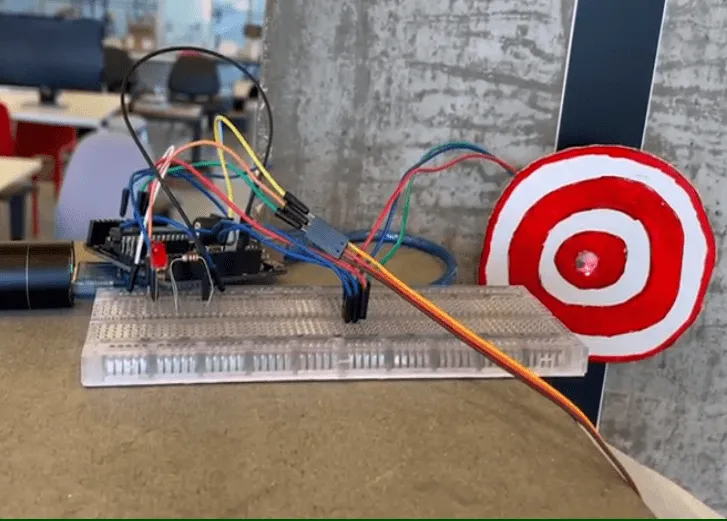Light Vender
Arduino Project

DESCRIPTION
We wanted to see if a pointed light source could be an effective method for toggle-based activation of an IoT device from a distance. We first programmed an arduino connected to a breadboard and LDR Photoresistor Light Sensor Photocell to record the range of ambient light and then the range when a laser pointer was focused on it. The more light exposed to a photoresistor’s face, the smaller the resistance is. So by measuring the photoresistor’s resistance we can get an idea of how bright the light is. Then we set the arduino to ignore ambient light and when pointed at, activate a servo motor and its 3D printed attachment to drop a tic tac into the hand of the user. A light-activated vending machine.
Takeaway: This project was very easy to demonstrate a working prototype. There were no issues with the photoresistor processing and pointing a laser pointer from a distance was very effective in activating the arduino without error or delay. While a simple project, I believe the prototype demonstrates potential benefits over a typical remote (transmitter) and TV (receiver). For example multiple receivers (TV, AC, lights, etc) in the same location can be accidentally activated by a single transmitter. Our prototype is more precise and requires only a single universal transmitter remote. In future work I would like to build a ring-based transmitter and a receiver (using microprocessor such as ESP8266) that can then be integrated into any device to make it “point-activated”. This could have promising use cases for mobility-constrained individuals.
SKILLS
C++ programming, Arduino, 3D-Printing, Light Sensors
